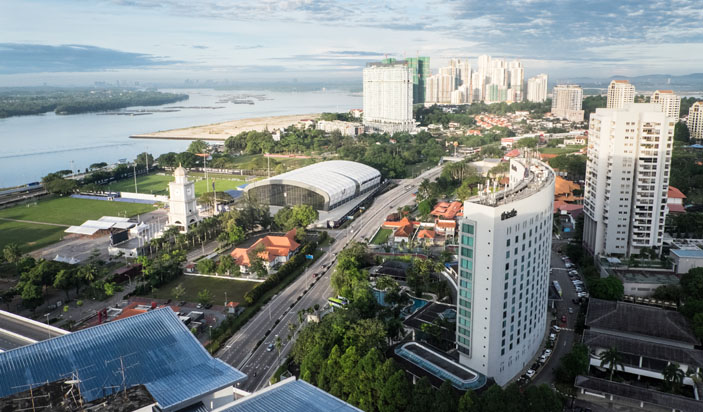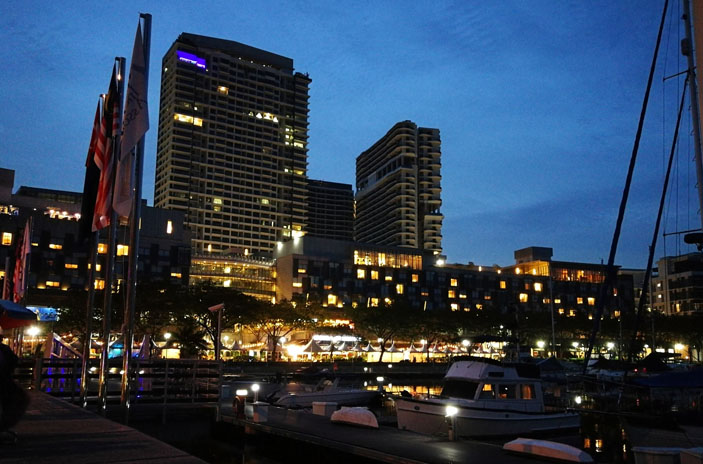BILATERAL ties between Singapore and Malaysia went up another notch with the signing of a legally binding bilateral agreement to build a cross-border MRT line.
The train line, for commuters to travel between Woodlands North and Johor Bahru, will enhance the connectivity between Singapore and Johor, with the 4km Rapid Transit System (RTS) Link expected to be completed by the end of 2024.
It adds to the high-speed rail project that was previously signed between the two countries.

The RTS link is expected to ease congestion at the border crossings between Singapore and Johor. Traffic jams during peak hours and holiday periods at the road links in Woodlands and Tuas have long been a source of frustration for commuters between the city-state and Johor.
Malaysians will continue to flock into Singapore to seek job opportunities as long as the Singapore dollar remains substantially stronger than the Malaysian ringgit. Meanwhile, Singaporeans will keep coming to Johor to stretch their dollar.
Regional Boost
This latest joint initiative affirms how closely Singapore and Malaysia are connected. After independence, there were deep-seated differences and animosity at the government level. Bilateral ties were poor as the previous leaders of the two countries didn’t see eye to eye on many issues.
The positive thing is that the people generally ignored what their leaders did and continued to engage with each other.
The RTS and HSR links will allow the people of the two countries to engage even more.
The announcement of the RTS link will also likely give the Iskandar Malaysia region in Johor a boost.
Singapore remains one of the biggest investors in Iskandar Malaysia. The region registered MYR244.46 billion (S$81.5 bn) of investments between 2006 and September 30 last year. Some 54% of these investments are already realised, according to the Iskandar Regional Development Authority (IRDA).
Singapore needs Iskandar Malaysia to thrive as it seeks opportunities to shore up its external economy. Growth in the city-state has slowed in recent years and global opportunities to build its external economy are scarce and draw a lot of competition. It makes sense for Singapore to forge deeper economic ties with nearest neighbours Malaysia, as well as Indonesia.
You Might Also Like To Read:
Holiday With Cristiano Ronaldo?
Luxury Towers Over Mumbai Slums
Vision Quest
This is also something that the authorities in Singapore are perhaps already thinking about.
In 2015, the managing director of the Monetary Authority of Singapore (MAS), Ravi Menon, gave a keynote address at the Singapore Economic Review Conference 2015 titled “An Economic History of Singapore: 1965-2065”. It was a hypothetical, with Menon putting himself in Singapore in 2065 and looking back at how Singapore’s economy had developed over the previous 100 years.
He said in his address that, in 2028, Malaysia and Singapore got together to set up the Iskandar-Singapore Economic Zone or ISEZ: One economic system spanning two sovereign countries. “The experiment succeeded beyond expectations, providing global and regional investors an integrated production and services base that was unmatched in Southeast Asia,” he noted wearing his Utopian rose-coloured glasses.
While only a hypothetical review, his address was thought-provoking.
An economic zone between Singapore and Johor would expand the Republic’s manufacturing base and could also help it achieve more security in food and water supplies, for example. This is something that the Singapore authorities have to constantly grapple with. There could be free movement for people within the economic zone which will ease the congestion problems at the road links between the two countries.
For More Commentaries visit http://www.storm.sg/views/

Building Anticipation?
If you drive around in the Iskandar Malaysia region right now, there is so much housing construction that you wonder if houses and condos will ever be sold. The rampant construction makes more sense if typically clued-in property developers are expecting some sort of economic zone spanning Singapore and Iskandar Malaysia to come into play.
It also seems logical to improve the transport infrastructure within the economic zone, manifested by the planned RTS and HSR train links.
If a blueprint for such an economic zone is not a fantasy, then the year 2028 which Menon mentioned is only 10 years away.
But this should give authorities on both sides of the Johor Straits a reason to formalise an agreement. After all, what are future retreats between the Prime Ministers of Singapore and Malaysia going to be about?
A zone may come even faster if global economic uncertainty puts more pressure on Singapore’s economy. The city-state may need to lock in a hinterland sooner than expected.
Thus It Was Unboxed by One-Five-Four Analytics presents alternative angles to current events. Reach us at 154analytics@gmail.com
Images: / Shutterstock.com





















